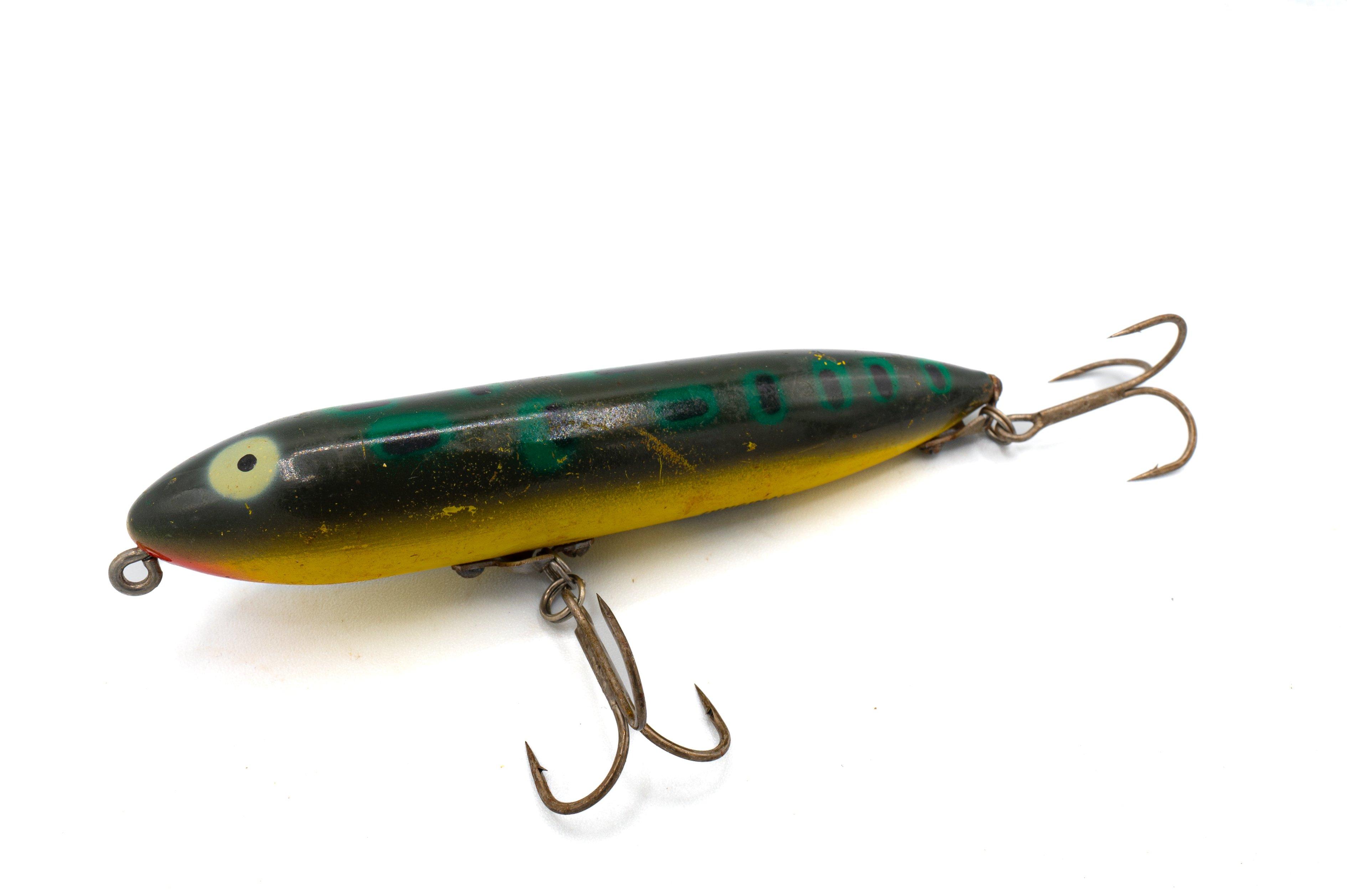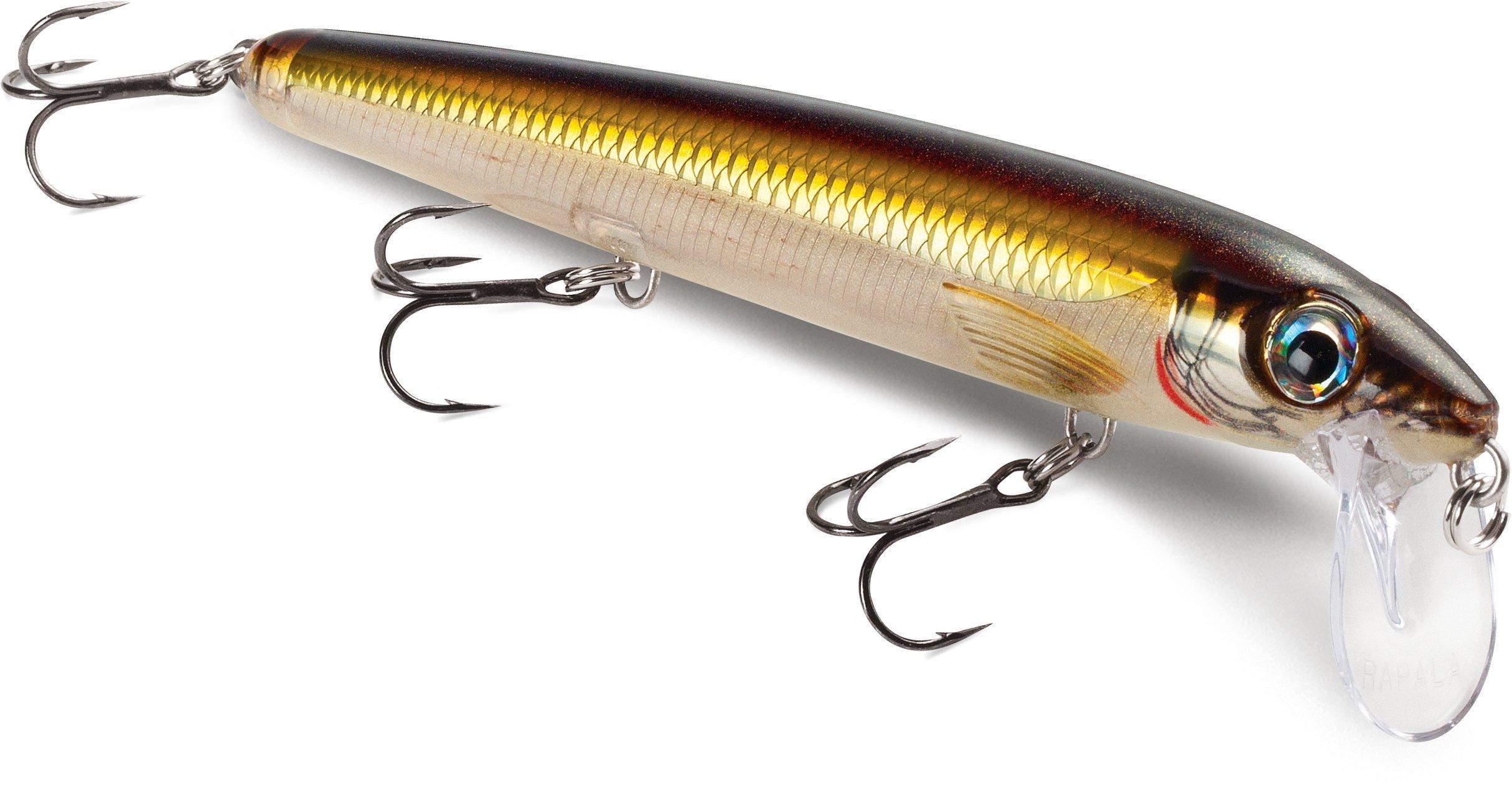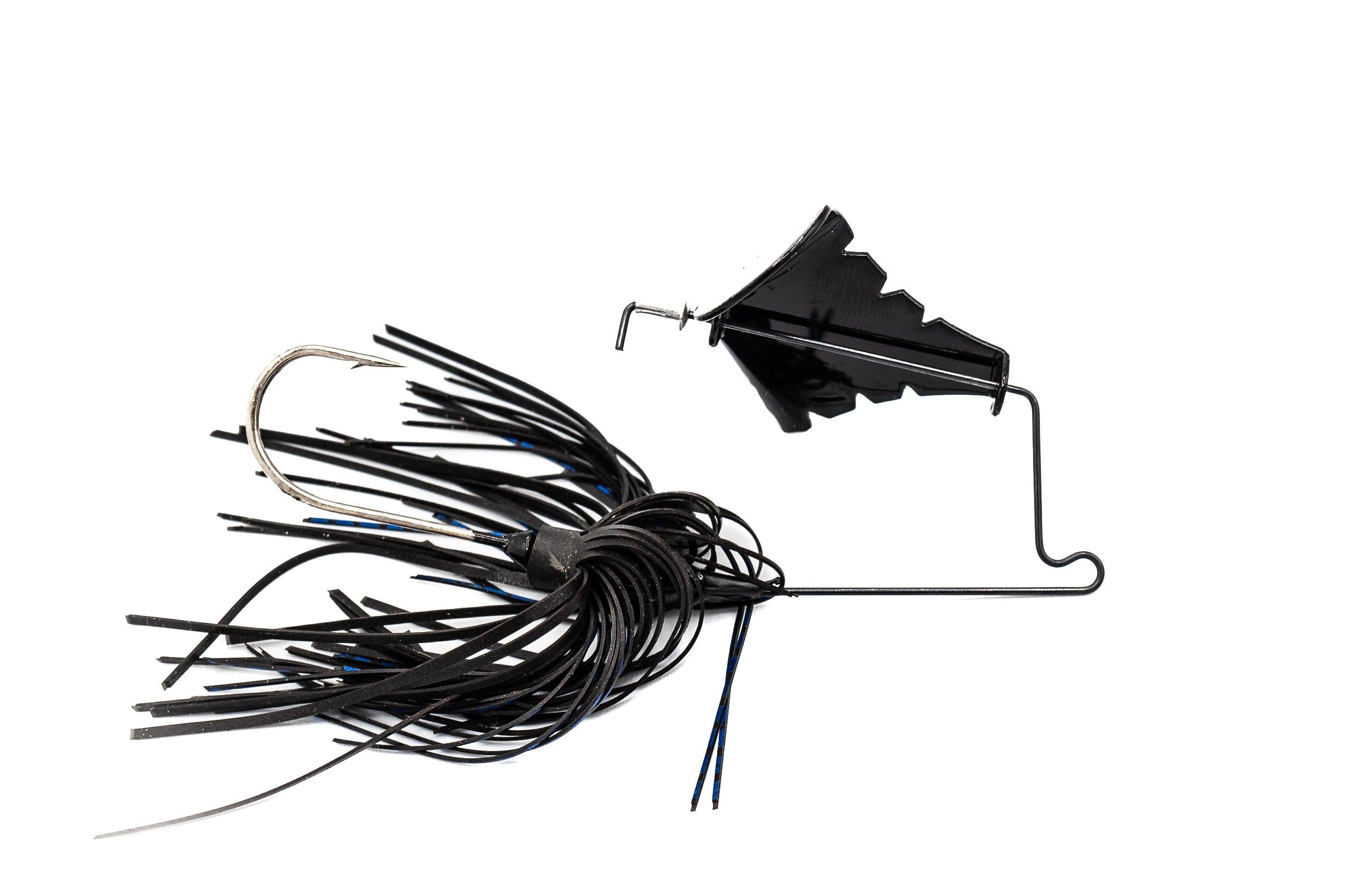Ask a handful of avid bass fishermen their favorite ways to catch fish and you won’t be surprised by their answers. Topping the list pretty much every time: topwater lures.
Topwaters are a universal favorite. They bring the best part of bass fishing — the strike — front and center for us to witness. For the best chance at heart-stopping action, nothing beats a topwater.
Useful in all but the coldest waters, there’s a good chance for topwater action almost every time we hit the lake. Certain periods, however, shine as the best for surface action. Early summer reigns supreme.
When they finish spawning, bass begin to transition into summer habits. Feeding aggressively in warming waters, all species of bass become suckers for topwater lures. Certain baits outproduce the rest. Follow our guide to get in on the action.

Walking baits such as the Zara Spook are a great choice when bass move to summertime patterns, and a favorite of Realtree pro Stetson Blaylock. Image by Millennium Promotions Inc.
Walking baits
Let’s start with the lure group that will get you the most strikes. As bass move toward main lake areas, they do so in search of their favorite summertime foods. Down South, that comes in the form of shad. Throughout the North, it might be yellow perch, shiners, or even alewives. In any case, large groups of forage fish gather this time of year in the main basins of your local water. Area bass take note.
Summertime fish are roamers, covering large areas, following forage. Although subtle poppers and twitch baits produce in spring, summertime brings with it a need to keep moving. For that reason, it’s important to choose a lure that covers lots of ground. Nothing beats a walking bait.
Veteran anglers remember the Zara Spook — one of the first commercially made walking plugs, and still a favorite today. Realtree pro Stetson Blaylock is a fan.
“I like the mid-sized Zara Spook One-Knocker,” he said. “It will catch all sizes of fish when they’re schooling but really excels on the big-fish bite.” Blaylock, like other fans of The Spook, can recall dozens of times when this old-school bait triggered the biggest bass of the day. The One-Knocker version features a loud knocking noise-maker, creating a dominant appeal to a big bass.
In all, the secret to walking baits is their hypnotic back and forth action, able to be paused or interrupted as the angler likes, creating a very erratic movement. Walking-bait wizards can make the lures track one way or the other by extending or shortening the stroke. It’s possible to get the bait far up under boat docks and beneath overhanging limbs, triggering strikes from bass not used to seeing lures.
Walking baits are large and heavy, cast well in the wind, and can cover large areas. These lures seem to attract bass from great distances. For best results, choose a walking bait when the water is fairly clear, and fish on a medium-power rod with mono in the 20-pound range. Although many pros, Blaylock included, rely on braided line, mono is more forgiving and keeps the lure from tangling in the hooks. Also, a jumping bass is less likely to throw the bait.
Attach walking lures using a small clip or a loop knot to get the best action. And don’t think these are simply largemouth lures. Walking baits are the best topwater lures for big smallmouths, and happily gobbled up by magnum spots, too.

Wakebaits create vicious strikes from schooling bass on calm days. Image by Rapala
Wakebaits
A fairly new phenomenon for many bass anglers, and a closely guarded secret for others, wakebaits came into the limelight because of their incredible productivity when targeting schooling bass in clear water. In many parts of the country, especially reservoirs with blue-back herring, wakebaits produce when nothing else will, even light finesse applications.
Some modern bassers classify the old Jitterbug as a wake bait. I’m not sure that’s entirely accurate, as grandad’s lure was more of a wobbler. Instead, the true root of wakebaits can be traced to slender minnow plugs with modified lips such as the Cordell Redfin, Bagley Bang-O, and the original Rapala minnow. Innovative Ozark anglers would modify these lures to wobble just under the surface, creating an inviting “wake.”
Today, of course, options are endless. Wakebaits come in all shapes and sizes. Choose one that closely matches your forage base, and give it a shot when winds calm and nothing else seems to work.
As we mentioned, summertime bass routinely school around forage, and when the bite dies, they simply remain with the food base. Coaxing bass to the surface with a wakebait is often the best method to get bit. The same areas that produced with a walking bait — main-lake points, deep boat docks, channel banks — will shine for patient anglers using wakebaits throughout the hottest part of the day.
Again, mono works best, but braid allows for longer casts, often a key when you need to get far away from the boat. Wakebait fish can be spooky.
Do your best not to impart any action to the lure. Best retrieves are slow and steady, creating the namesake wake. Bass will come from nowhere and demolish the lure. Be sure to take your heart pill.
(Don’t Miss: JACOB WHEELER ON LIFE AND BASS FISHING)

The author's favorite for big Florida bass: an old-school black buzzer. Image by Millennium Promotions, Inc.
Buzzbaits
My personal favorite, buzzbaits have been catching above-average bass for decades. It’s hard to determine when the first buzzbait hit the market, or exactly what the lure is intended to imitate. I’ve heard everything from fleeing frogs to spawning shad. In any case, bass continue to blast buzzbaits today the same way they did in the ’70s.
Buzzbaits are best for largemouth bass, though big smallmouths will surprise you from time to time, especially around sea-walls and current-blocking objects on large rivers. There, bass cream a buzzer like nothing else.
There’s no better topwater for fishing in the heavy grass of the South, as buzzers come through clean and can be easily ripped out should they tangle. And buzzbaits are big bass specials, no doubt. They rate as my No. 1 topwater for catching huge Florida bass anytime after the spawn is completed.
Stick to the shallows when fishing a buzzbait. These lures will produce better near the bank than on grass flats out on the main river. With a little practice, buzzbaits can easily be cast up under boat docks and around fallen trees, where they force bass to bite. Savvy river anglers know the power of buzzers at the mouths of feeder creeks and in and around culverts — another summertime hang-out for bass.
Buzzbaits perform equally well on mono, braid, or fluoro. Just be sure to have a little flex in your rod should you choose to use a direct braided line, as there will be no stretch. Today, most pros use buzzbaits featuring a plastic frog-type lure rather than a rubber skirt, allowing for longer casts and more sputter. I still find the skirt to be as, or more, productive for giant fish.
Black is the only color buzzbait I use in Florida. White buzzbaits seem to shine other places, and I’ve got a buddy who swears by yellow. Seems he thinks the lure looks like baby duck. Whatever puts them in the boat.

Hollow-bodied frog lures score big with post-spawn female bass looking for an easy meal. Image by Millennium Promotions for Z-Man Lures
Frogs
Here, I’m talking about hollow-bodied frogs, not the soft plastic models that go on a worm hook and are sometimes subbed for a buzzbait skirt. Yes, those work, too. But the hollow-body lure fills a specific void this time of year.
When bass finish spawning — especially big females — they spend a few days or weeks in the shallow spawning areas where they wage war on bluegills, terrestrial animals, frogs, and anything they can fit in their mouths. This occurs mostly on natural lakes with good shoreline cover. Bullrushes, cattails, willow bushes, and alligatorweed are examples. Big bass cruise the shallows and ambush large prey. A hollow-body frog lure is best to fool these monsters.
The most important aspect of this type of fishing is covering a lot of water, looking for just one or two big bites. Pull the trolling motor up high, get on the front deck and move quickly through the shallows. Accurate casts are imperative. The ability to skip a frog lure will come in handy. It’s important to place the lure up under and around these ambush zones. I remember one big bass tournament that was won skipping a frog under pontoon boats — no easy feat, but ground-zero for super-shallow post-spawn bass. Most of the pontoons had their bows pulled up on the bank. Shallow, shallow.
The right rod is important when fishing these lures. Not too stiff, but heavy enough to pull a big bass out from under a dock, your rod should be a fast-action model exceeding 7 feet, much like a rod you’d use to pitch a jig. Tie directly with braided line. I like 50-pound braid for its combination of strength and relatively thin diameter, making long casts and skips easier.
Walking a frog lure is a technique that must be practiced to be mastered. It takes a bit of slack in the line, and later becomes habit, much like walking other topwaters. Critical spots to hit have an object or shoreline feature where bass can pin the frog, such as a thick cattail clump, exposed roots, or stumps. This is a less bites/bigger fish tactic; it will surprise you how shallow some of the big girls still are.
Topwater season is here. Don’t miss out on this unique time of year when surface baits produce best. If they’re not already, topwater lures will soon be your favorite, too.
(Don’t Miss: BOWFISHING SHOOTING TIPS: HIT MORE FISH IN FEWER SHOTS)










